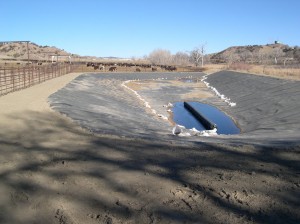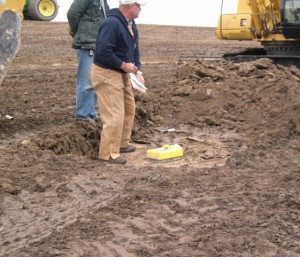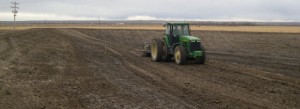Wastewater impoundments come in all shapes and sizes. At Brink, Inc., we have designed dozens of impoundments with liner types ranging from GCL and geomembrane material to native clay – by itself or with an additive such as soda ash.
Lined impoundments may function as stand-alone structures, or as part of a multi-impoundment storage system. Solid settling structures may be used up-gradient of impoundments to intercept suspended solids, or runoff may simply flow directly into the pond.
One thing nearly all wastewater impoundments have in common is a liner to restrict seepage. Liners may be composed of naturally available material, such as native clay, or manufactured material, such as HDPE or PVC. Older wastewater impoundments may simply have liners made of manure that has settled on the pond bottom and sides over a period of years.
Impoundment liners are not all created equal. As a natural component of soil, fat clay is usually the liner material of choice because it is highly malleable (‘plastic’), inert, and never wears out. The downside of clay is that it is heavy and expensive to import. For this reason, clay must be available on-site or fairly nearby to be economically feasible.

Materials such as high density polyethylene (HDPE) or PVC can make very suitable liners provided 1) the type of material chosen matches the job requirements, 2) the pond and liner anchoring system are properly designed, 3) the liner is correctly installed, and 4) the liner is maintained in accordance with the manufacturer’s specifications. These types of liners are typically referred to as ‘geomembrane’ liners.
Another type of liner is the geosynthetic clay liner (GCL). This type of liner material is made of a very thin layer of sodium bentonite ‘sandwiched’ between two layers of a woven fabric-like synthetic textile material that is stitched together. When the liner material is exposed to water, the sodium bentonite – which is a type of clay – expands dramatically, forming a very low permeability liner. GCLs are usually covered with soil to protect them from damage. Maintenance of a geosynthetic clay liner generally consists of making sure the soil overburden adequately covers and protects the GCL. The cost associated with a GCL is typically higher than a geomembrane liner.
Whatever type of low permeability liner is used, proper maintenance is key to minimizing problems and ensuring the liner functions as planned.



